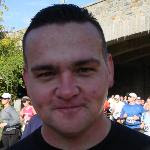 This week members of the new 110th Congress had their orientation on Capitol Hill. During the orientation, Freshman Congressman and Congresswomen, and Senators went through the two houses' respective processes for finding a new office.
This week members of the new 110th Congress had their orientation on Capitol Hill. During the orientation, Freshman Congressman and Congresswomen, and Senators went through the two houses' respective processes for finding a new office.Whichever office each new member gets, they will be able to bring a dog to work with them if they choose to. One of the little known secrets of Capitol Hill is that all the Capitol buildings are wide open to dogs.
The logic goes something like this: if a Member of Congress wants to bring their dog to work - nobody is really in a position to tell them they can't. But then, as they represent the people - no Member of Congress should have a special privilege that a member of the general public does not. Therefore, though it might not be advertised, if you try to walk into any of the House or Senate office buildings with a dog, nobody will stop you.
The pup may have to walk though a metal detector - but that's about the biggest hurdle he'll face.


